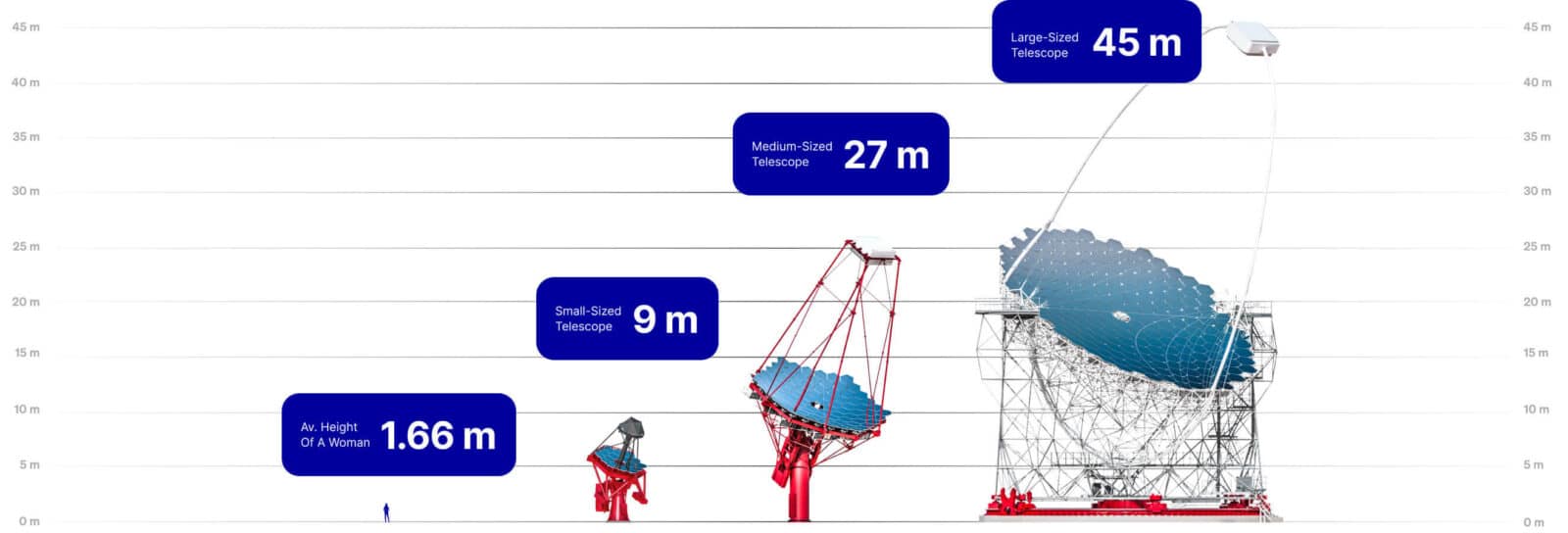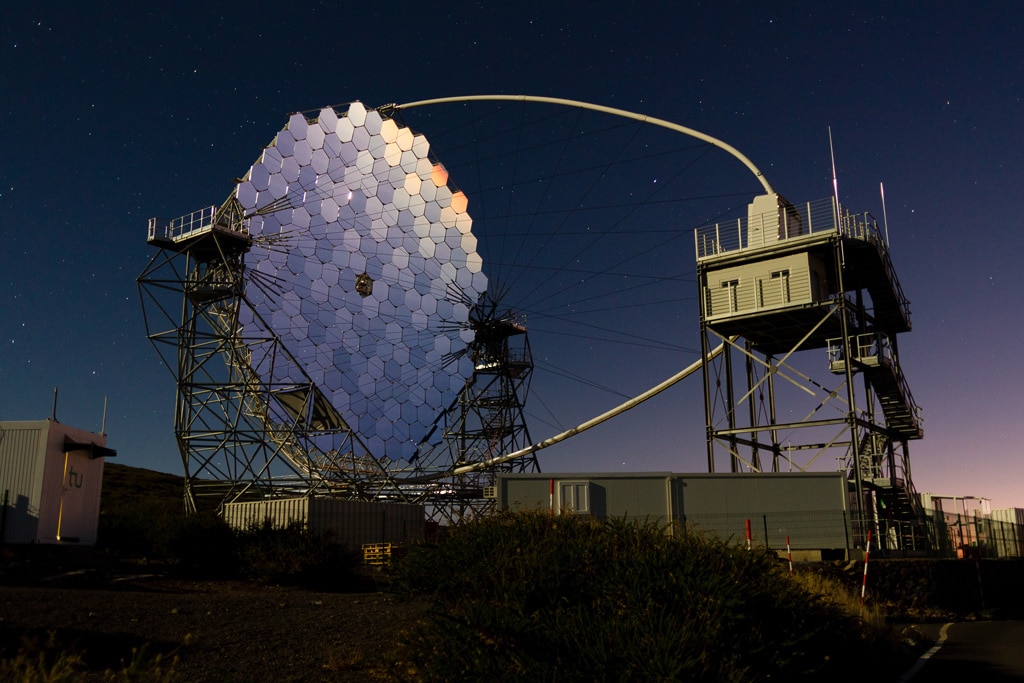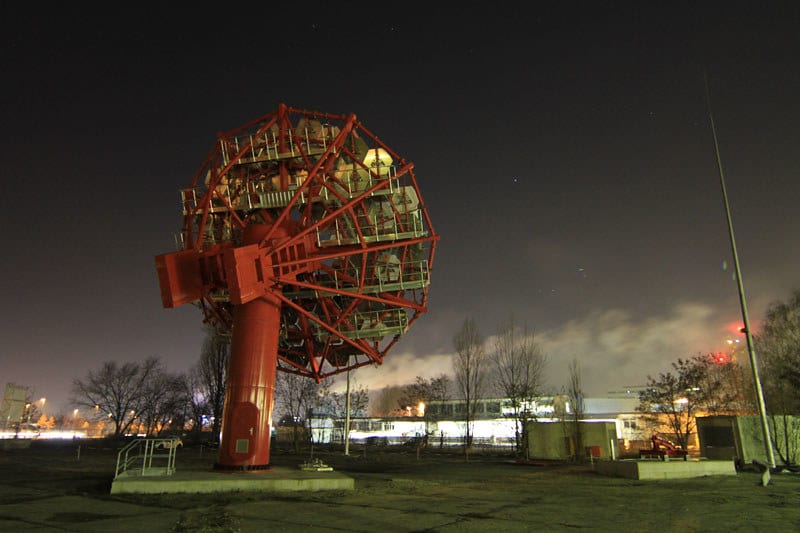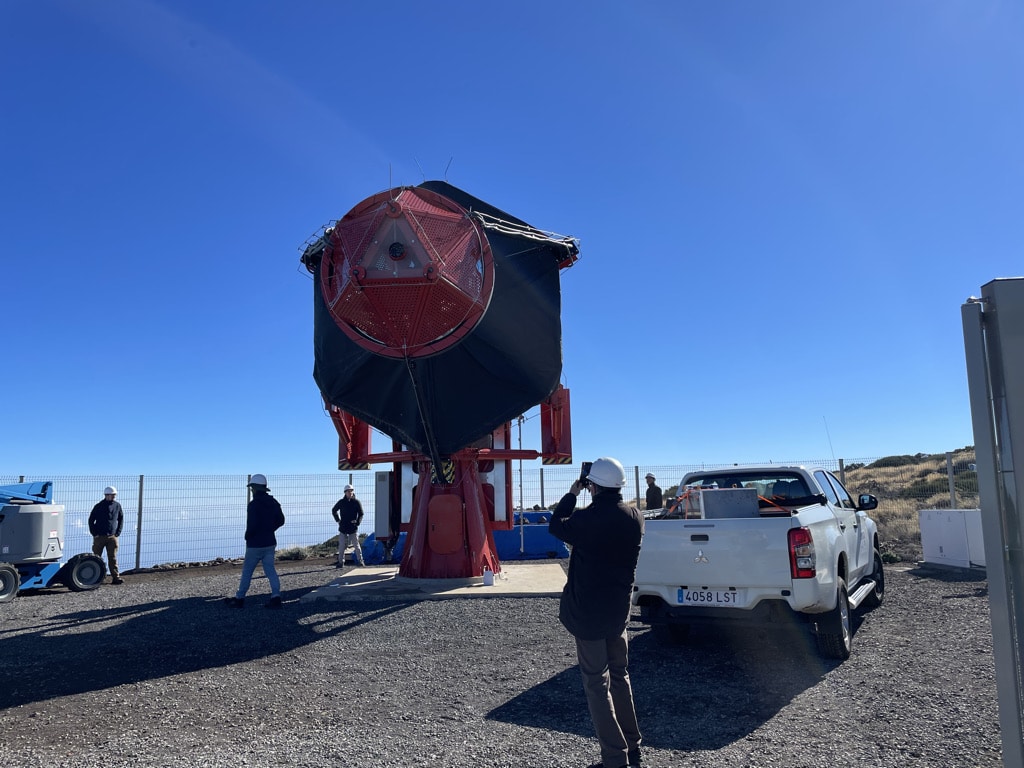The Telescopes
The CTAO is the world’s largest and most powerful ground-based observatory for gamma-ray astronomy at very-high energies. The CTAO’s telescopes will detect high-energy gamma rays with the imaging air Cherenkov technique, which includes the Earth’s atmosphere as a critical step in the detection process (go to How CTAO Works). When the gamma rays interact with the Earth’s atmosphere, they create particle cascades that generate extremely fast flashes of light. This “Cherenkov light” is what CTAO’s telescopes capture so that scientists can study the gamma rays indirectly and give us a completely new view of the extreme Universe.
To make this possible, three classes of telescope are required to cover the CTAO’s broad energy range (20 GeV to 300 TeV). For its core energy range (150 GeV to 5 TeV), the CTAO is planning up to 23 Medium-Sized Telescopes distributed over both array sites for the first construction phase. Up to four Large-Sized Telescopes and 37 Small-Sized Telescopes planned to extend the energy range below 150 GeV and above 5 TeV, respectively.
Our Telescopes in Numbers
The CTAO will cover a very wide energy range and provide excellent angular resolution and sensitivity in comparison to any existing gamma-ray detector. With its ability to detect energies between 20 GeV and 300 TeV and its unprecedented resolution, the CTAO will be able to observe further than ever before and push the CTAO to the edge of the known electromagnetic spectrum, providing a completely new view of the sky.

Explore Our Telescopes
The Details
Why Three?
Each class of telescope is tasked to cover a different energy range, thus the designs and distribution of telescopes on the two CTAO array sites are important. Since the showers generated by the highest energy gamma rays are rare but produce a large amount of Cherenkov light, many SSTs spread over a large area improve our chances of detecting them. On the other hand, the LSTs are less in number and have massive reflectors to capture the more faint but frequent lower-energy flashes. The MSTs capture the range in between.
Mirrors
It may look like our telescopes have one solid monolithic mirror, but, if you look closer, you’ll see each telescope’s reflector is comprised of many highly reflective hexagonal mirror facets. This design, invented by Guido Horn D’Arturo in the 1930’s, allows us to build very large reflectors more easily and more economically. The CTAO will use computer-controlled optics systems to actively align approximately 3,500 of these highly polished mirror facets to focus light into the telescopes’ cameras.
Cameras
To detect the short flashes of Cherenkov light, the telescopes’ cameras must be about a million times faster than a common camera. To do this, they will use high-speed digitisation and triggering technology capable of reading shower images at a rate of one billion frames per second and sensitive enough to resolve single photons. Depending on the camera design, photomultiplier tubes (PMTs) or silicon photomultipliers (SiPMs) will convert the light into an electrical signal that is then digitised and transmitted to record the image of the cascade.


